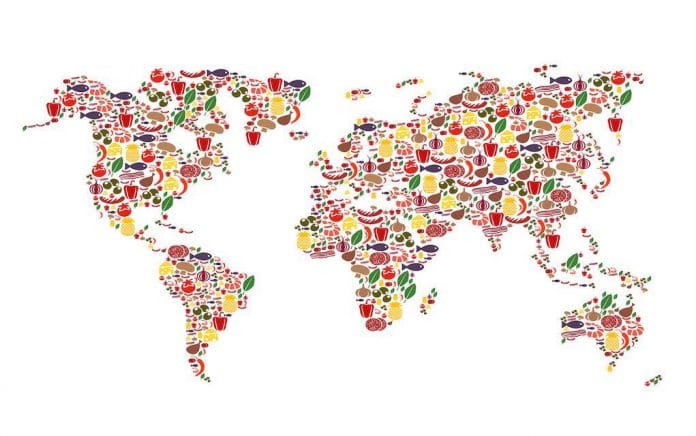
Ever think about the environmental impact of the food on your plate? If you want to be more eco-conscious, your food is the first place to look. Believe it or not, the production, processing, and delivery of food create the largest strain on our environment than any other industry. The energy consumed in producing and distributing food accounts for roughly 60 percent of the total energy produced by North Americans. Of that 60 percent, more than 85 percent of this energy is produced from burning fossil fuels which generates greenhouse gases that contribute to global warming.
Since food production is the largest energy drain in North America, it’s also the best place to start when looking for ways to reduce energy consumption. Less processing is better, not just from a health standpoint, but from an environmental standpoint. Reducing the number of steps involved in food production is the first and simplest way to accomplish this. The more processing and refining done to food, the more energy is consumed.
Protein: A Huge Environmental Strain
Traditional protein-rich foods require the most resources to produce, such as land and water, in addition to the most energy. Traditional protein-rich crops consist of animal products such as meat and milk. Land must be used to grow food to feed the animal, and additional pasture land is needed to raise the animal. Processing and distribution of animal products are also labor and energy intensive.
The numbers tell it all: producing one kilocalorie (kcal) of beef requires the input of 35 kcal of fossil fuel, whereas the production of one kcal of plant protein uses a mere 2.2 kcal of fossil fuel. That means beef production requires nearly 16 times more fossil fuel energy than plants to produce one kcal of protein.
Most standard crops, such as wheat and corn, produce very little protein. A plant with a high protein content is needed; one that can be fed directly to humans without having to pass through numerous energy-intensive steps to convert it to a reliable form of protein.
Healthy Plant-Based Proteins
Fortunately, such plants exist. One example is hemp. Both nutritionally and environmentally superior to most plants, hemp seed contains 35 percent protein and as well as numerous nutrients. And, unlike many crops, hemp can be grown in both hot and cold climates and it grows much faster than many traditional crops. Hemp can also be grown efficiently without herbicides and pesticides because it is naturally resistant to most pests.
Consider this: One pound of hemp seed provides all the protein, essential fatty acids, and dietary fiber necessary for human survival for two weeks.
Chlorella, green algae, is another incredible plant. Chlorella is the number one food supplement in Japan, and is currently being investigated in the West as a “land saver.” Chlorella is by far the most environmentally efficient method of protein production because it can reproduce four times every 24 hours and has the highest protein content of any living organism on earth. It is a true superfood, consisting of 65 percent protein and high levels of essential fatty acids, vitamins, minerals, and enzymes. It also contains more chlorophyll and nucleic acids (DNA and RNA) than any other known plant, which makes it an excellent detoxifying agent.
Use Your Consumer Power
As consumers, we have the power to push the economy toward greener initiatives. Where we choose to spend our money determines which businesses thrive and which fizzle. We can force the issue by avoiding corporations who practice poor environmental policies such as unsustainable and inefficient land use, use of toxic herbicides and pesticides, and destruction of old-growth forests.
If you want to double your impact, support the small, eco-conscious companies. If these sustainable industries are able to flourish because of our support, others will see that “green agriculture” produces an “economic carrot.” They will quickly follow. Perhaps environmental sustainability is one problem we can eat ourselves out of.
More on Green Eating:
The Meat and Bones of Climate Change










